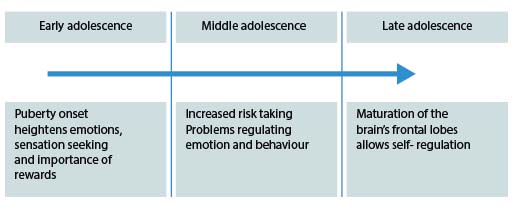1.4 Adolescence and emotion
At the onset of puberty, there are clear changes occurring in the brain on a young person’s journey towards emotional maturity. As you will see in the next section, adolescence is a time of great change in brain development, with implications for how young people recognise and regulate their own emotions (Yurgelun-Todd, 2007). These changes also appear to bring about an increased risk of problematic behaviours and emotions (Steinberg, 2005).
You may remember that young people are beginning to distance themselves from their parents and caregivers. This means that adolescents may find themselves relying on their own slightly ‘wobbly’ emotion regulation capacities at a time when they are facing new social challenges.

